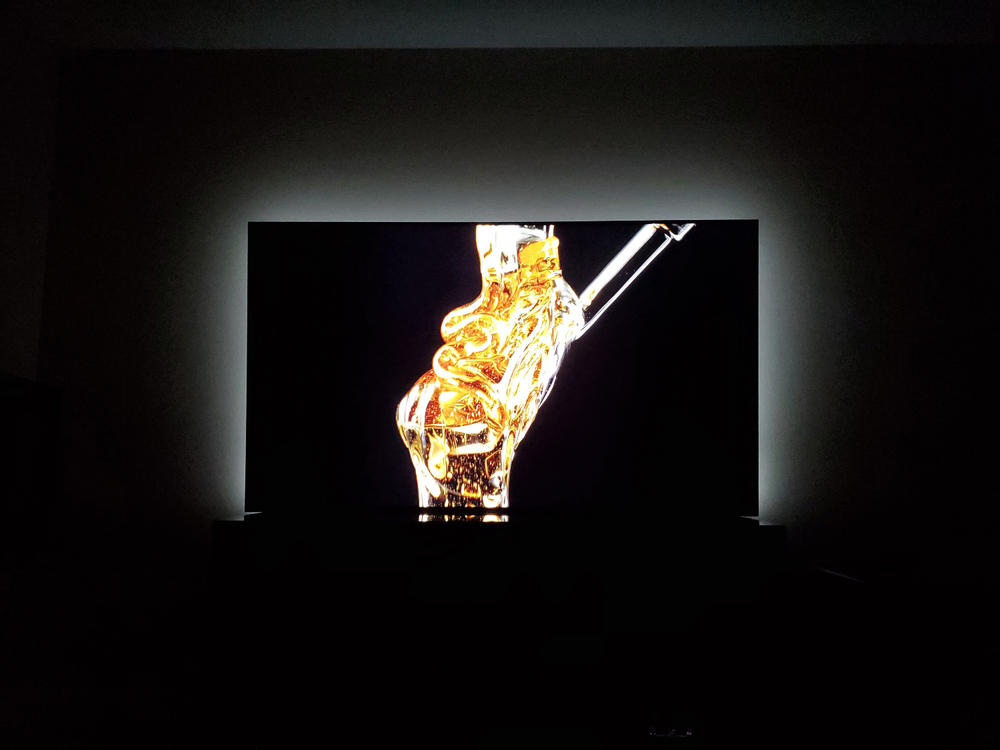Industry Standard Bias Lighting
Industry Standard Bias Lighting
MediaLight & LX1 Length Calculator
Please select the appropriate options below to determine the correct size bias lighting for your displays
What is the aspect ratio of the display?
What is the size of the display (This is the length of its diagonal measurement)
inches
Do you want to place the lights on 3 or 4 sides of the display (Read our recommendation on this page MediaLight & LX1 Length Calculator if you are having trouble deciding).
This is the actual length that is required:
You should round up to this size bias light (you can round down at your discretion if the actual and rounded measurements are very close. It is usually better to have more than too little):

What’s a good way to eliminate OLED eye strain? Install bias lighting.
If you're a professional colorist or video editor, you know that eye strain can be even worse with OLED than with other display technologies. But if you're just an avid TV watcher, there's a good chance that it's never occurred to you. The reason for this is because eye strain is caused by the contrast between dark scenes and bright scenes on your screen- this means that when viewing content on an OLED screen, your pupils constantly dilate and constrict in order to cope with both the very dark blacks and the very light whites. This constant back-and-forth creates more stress on our eyes than what happens when watching content on traditional displays.
Infinite contrast might not cause infinite eye strain, but it can be significantly worse than LED panels.
Then there's not just the capability of the display, but also what it displays. Most existing content was not graded for OLED displays, so blacks can still be improved in situations where the black level in the content are above zero.
The colorists grading on professional OLED monitors use bias lighting too. It's not about picture quality of the display but rather our ability to see that picture quality--it is how (non-prescription) sunglasses can improve our vision when driving a car because it enhances our ability to see the pictures, which appears more vivid and sharper due to increased depth of field from narrowed pupils.
As you know by now, OLED isn't a very bright technology. So, how do bias lights make OLEDs appear brighter? Let's show an example.
Which white square looks brighter? The one with a simulated dim surround on the left or the one on the right?

They are both the same brightness level but our brain perceives the square on the left as being brighter.
Nobody knows what the future holds, but it's safe to say that our current home theaters will be outdated in 10 years. Remember when we said we couldn't even see the pixels on 1080p? Remember 1080i? We obviously all know that the picture can get better because it always does, as does our ability to pick it apart.
For example, following close behind the other popular searches that bring visitors to our site, "OLED image retention" and "OLED shadow banding" are not far behind. These are limitations of current OLED technology that are also mitigated by proper bias lighting. And even without those limitations, a lot of content was not color graded for OLED displays, and this content benefits from bias lighting as well.
Joel Silver from ISF likes to say that everyone has opinions about how to set up a TV, but there are defined standards that are accepted internationally. We're all entitled to our preferences too. When I'm working on my computer for non color-critical work, I set my bias lighting much higher than the standards. Because bias lights work on the viewer and not on the TV, it's ok to experiment to find your ideal brightness settings.
If you suffer from OLED eye stain, we recommended lowering the brightness of your display after installing bias lighting. It sounds counter-intuitive, but a dim surround of bias lighting makes the display look brighter, so you don't need to run the TV at such a high brightness level.